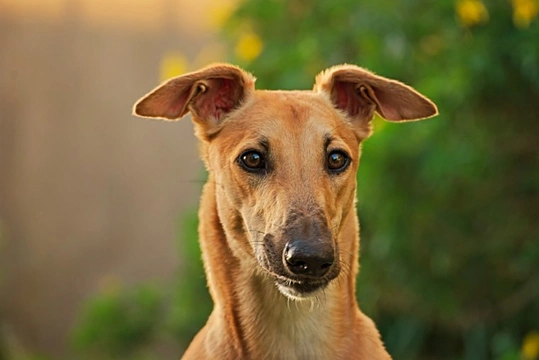
Keeping sighthounds safe – factors to consider
Sighthounds are dogs that identify and hunt for prey by sight, as opposed to other types of hounds that hunt by scent or a combination of sight and scenting.
There are several different dog breeds within the collective known as sighthounds, all of which have their own unique individual traits and pros and cons, and some of the better-known sighthound breeds like the greyhound and the whippet are hugely popular as pets all over the UK. Others like the Afghan hound are rather less common – and very different looking – but when you have a better understanding of what makes sighthounds as a collective different from other dogs, you can usually identify dogs of this type on sight, if you’ll pardon the pun!
The unique build of sighthounds coupled with the core traits that sighthounds share in terms of how they identify prey, the incredibly fast running speed that they use to pursue it, and their almost unshakable one track mindedness in terms of pursuing it all make dogs of this type different from others. They also mean that there are a number of specific factors that sighthound owners need to consider when it comes to keeping their dogs safe.
With this in mind, this article will share some of the considerations that the owners of sighthounds in particular need to be aware of and mitigate to keep their dogs safe and protected from harm. Read on to learn more.
Training for good recall
Sighthounds are hugely one track minded when it comes to pursuing their prey, and it is the responsibility of all sighthound owners to ensure that their dogs are prevented from pursuing and attacking other people’s pets like cats and rabbits, and to keep wildlife safe too,
Training a sighthound for recall can be hugely challenging, and it is a simple fact that many sighthounds will never exhibit reliable recall – and if this is the case for your dog, you will need to take other steps to mitigate this.
However, it is really important to train your sighthound for as good recall as you are able, to protect other animals – and also, to prevent your dog from getting into danger or hot water, or doing as much as possible to protect them in this respect at the very least.
Safe running spaces
Sighthounds need to be provided with the freedom to run off the lead on a daily basis, which given the nature of the dog type, means they need to have access to a safe, enclosed space.
This means a place where dogs are allowed, that is securely fenced, and that has an even terrain that is free from hazards that might injure your dog if they’re running and not paying attention to their surroundings or their own safety.
Muzzling
If your sighthound catches prey or might pursue someone’s pet, they should be muzzled when running off the lead, once more to keep other animals safe – but also, to keep your dog safe too.
Eating wildlife like rabbits and other small prey can make your dog ill – and said prey might be ill itself, or have been poisoned as part of vermin control, or otherwise pose a direct hazard to your dog’s health.
In a wort case scenario, if your dog attacked someone’s pet, they could pursue this as a criminal matter under the remit of the Dangerous Dogs Act clause on dangerously out of control dogs – which could potentially result in your dog being destroyed.
Leads and control on the roads
The sighthound tendency to ignore all other things in the pursuit of prey means that keeping sighthounds safe when outside of secure running spaces tends to mean that they need to be kept on a lead. This will ensure that they don’t bolt off across a road, or even a cattle grid in rural areas and risk serious injury or death, and potentially damage or injury to another person or their property too.
Foot care
Some sighthounds and particularly greyhounds are prone to developing foot corns, and these are almost unique to dogs of the sighthound type.
Nobody is really sure why this is, but generally, a combination of the thin foot pads of dogs of the breed, walking on hard surfaces, and the added trauma of high speed running likely all come together to result in foot corns being reasonably common in sighthounds as they get older.
There’s nothing you can do to ensure that this doesn’t happen to your own dog if they turn out to have a propensity to developing corns, but trying to prevent running on very hard ground, regular checks of their feet, and seeing a vet that is familiar with the problem can all help to identify and deal with corns before they become problematic, and may help to prevent them in the first place.
Caution with anaesthetics
Finally, some sighthounds are sensitive or intolerant to the use of some of the most common veterinary anaesthetics, which means that extreme care must be taken when anaesthesia is required – such as for the dog’s spay or neuter procedure and any other veterinary surgeries.
Most vets are well aware of this and will assess the potential risk factors for your dog and potentially use alternative medications, but if your sighthound does require anaesthesia, bring this up with your vet first and find out what their plans are and how they intend to keep your dog safe.



